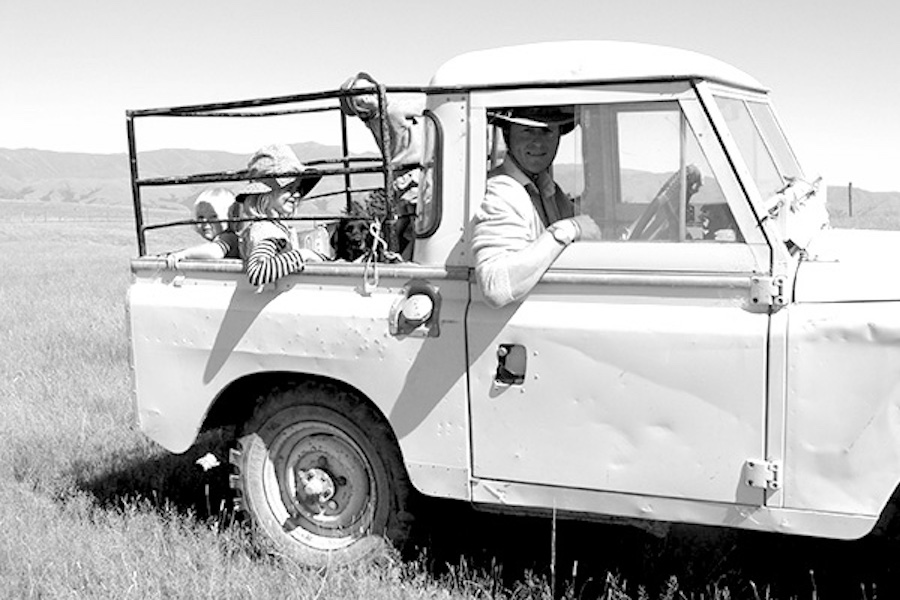This article was originally published in February 2018.
In this commentary I review the years since my return to the family industry (the most recent of them managing third party capital into agriculture, via Craigmore Sustainables LLP). I conclude with a list of 10 lessons learnt as a ‘Financial Farmer’.
The early years – the application of an excessively simple financial model to farmland
My early years back in farming roughly followed the patterns of grieving:
Denial (of my father’s legacy): Upon arrival I felt Craigmore Station (the family farm on the South Island of New Zealand) was too backward looking. When sheep were so profitable (they looked good in a spreadsheet in 2005) why did we have only 6,500 ewes, and carry such large numbers of lower return deer and beef cattle?
Anger and Frustration: These followed as South Canterbury experienced cold springs and dry weather in in the years 2006-2008. This did not sit well with the 10,000 ewes we now had lambing on Craigmore Station. Undernourished livestock are tough on morale as well as bad for financial returns.
Guilt: Our ewes were producing 15,000 lambs each year. Our feed budgets told us we had enough annual dry matter for them, but with each early spring we struggled to get the feed at the right time of year. In contrast deer, calving later in the spring, better matched the supply of feed on ‘summer safe’ Craigmore Station. Being responsible for 25,000 hungry sheep each spring was a harrowing experience and taught me how, no matter how good plans look in a spreadsheet, they need to be able to cope with the variances of the seasons
By 2009 Acceptance started to set in. My father used to say that Craigmore Station was best suited to around 1/3 sheep, 1/3 deer and 1/3 cattle. I now understood why. Since then my partner at Craigmore Station and I have been gradually shifting the property back to that mix.
From grieving to growing
By 2007, Craigmore Station had stabilised operationally and financially and we decided to grow our acreage through purchase of additional adjacent blocks of land. This enabled us to grow the 1,500 hectares I inherited to 4,000 hectares.
In the last couple of years annual operating profits from the core 1,500 ha Craigmore Station have begun to exceed the annual revenues of the property I inherited. This came about as we invested in improving, in a myriad of small ways, a good but undercapitalised property. Annual revenues of the entire business are now five times higher than those from the original farm and these revenues now flow from a wider range of crop types with dairy as well as red meat. Introducing irrigation is also improving both profit margins and reliability of the business. Irrigation is a joy both from the perspective of animal welfare, and staff morale, since it enables us to look after our livestock properly, largely irrespective of what the season throws at us.
So what have been the lessons of my time ‘back’ in farming?
10 lessons from my first 10 years back in the family business
- Be careful with overly simplistic production and financial models. e.g. don’t chase inventory cycles – find the right crop mix for the farm in question given long term economics, not one or two year’s commodity prices.
- Farms tend to be undercapitalised: they will often offer high marginal returns on the application of capital to incremental improvements.
- Don’t buy cheap land, buy reliable land – ideally irrigated or in a high/reliable rainfall area. The obsession of most financial investors (new to farming) with buying land “cheap” on a per hectare basis means that good quality (more reliable) farmland tends to trade at better yields per $ of capital employed.
- Some diversification can greatly help a farming business. In part to risk manage cash flows. In part to force the owners and management team to be more analytic and less ‘married’ to just one farming system.
- Timing can be very helpful in applying capital to agriculture. However the natural cycles of commodities and capital markets mean this is not an ‘obvious’ calculation. Typically some sectors will be overvalued at times, while other sectors offer value. Organise good analysis, good data and (again) experience within a self-critical, intellectually honest team.
- The returns are in the land. Ultimately it is the land not the livestock or working capital or processor shares that capitalise productivity gains (and basic scarcity) and rise in value. However you need to have the right operating structure to capture these gains.
- As our friends at Bidwells in the UK say in their research, those operating structures need to make 20 decisions every day and get 19 of them right. These systems are not the stuff of ‘command and control’ centralised governance. They need to achieve distributed responsibility – hence our heavy emphasis on share-farming.
- Productivity growth is the key to understanding the enigma that is real assets: applying ‘standard’ accounting practises to a farm is misleading – which is why farmers tend to ‘carry on’ regardless of their accounts.
- As a financial type however I could not afford to ignore the accounts. I needed to figure out ‘arbitrage free’ accounting approaches for real assets – to make farm accounts comparable with other asset classes. It has been this desire to build more accurate models that has led me to build a ‘Map of Agriculture’ database of actual farmland productivity, financial cost and returns data, for over 170 crop-types, across the surface of the earth. We need a better model of agriculture than the home made excel spreadsheets I built when taking over Craigmore Station.
Finally, be patient: In any one year the returns may look ordinary, but don’t sell early. In general it is not a great idea to sell land!







